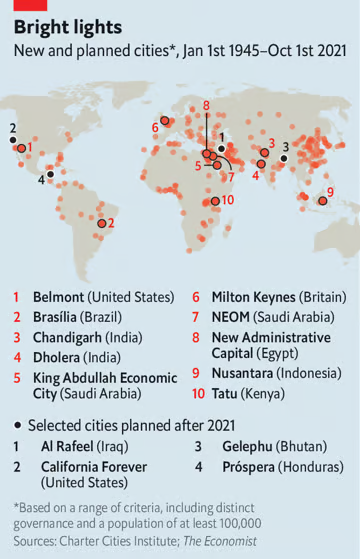How an American Dream of Housing Became a Reality in Sweden
The U.S. once looked to modular construction as an efficient way to build lots of housing at scale, but Sweden picked up the idea and put it into practice
By Francesca Mari
Photographs and Video by Amir Hamja
Published June 8, 2024
As an architect, Ivan Rupnik thinks the solution to America’s affordable housing shortage is obvious: Build more houses. Start today. But the way homes are built in the United States makes speed impossible.
Years ago, Rupnik’s Croatian grandmother, an architect herself, pointed him to an intriguing answer to this conundrum: modular housing projects built in Europe in the 1950s and ’60s. Rupnik was awed. Sure, prefab complexes, and especially Soviet bloc housing, could be ugly and too homogenous, but the process created millions of housing units in a flash.
Hooked, Rupnik started researching modular housing for his doctoral dissertation. In the archives of the Harvard Graduate School of Design, he stumbled upon a reference in an old journal article that took him by surprise: an industrialized housing initiative called Operation Breakthrough that built nearly 3,000 units between 1971 and 1973 — in the United States. How had he never heard about it?
It turned out few people had. Unable to find much more information, Rupnik turned to the Department of Housing and Urban Development, which created the program. In 1969, when Operation Breakthrough was announced, HUD was less than four years old and affordable housing was still a bipartisan issue. The plan’s visionary, HUD Secretary George Romney, a former Republican governor and Nixon appointee (and, yes, Mitt’s father) pitched it as Economics 101: If you quickly increase the supply of housing, you drive down the price for all.
Romney said the country needed to build 26 million houses in 10 years, almost three times as many as had been built in the previous 10. Industrializing construction, he argued, was the only way to do it.
While nearly every other industry has become more productive since 1968, productivity in home-building — the amount of work done by one worker in one hour, essentially — has declined by half. The country is barely building enough to maintain the status quo, which is some four million units short of need, according to Freddie Mac. In the coming years, with population growth, climate change and the natural deterioration of housing stock, we’ll only need more.
Housing shortages were already a problem in 1969. Romney understood that companies wouldn’t invest in the machinery and overhead needed to industrialize because varied local building and zoning codes made it impossible to scale up. Operation Breakthrough proposed using the vast purchasing power of the federal government to guarantee a large market, and in the process, document and change the regulatory barriers to industrialization.
Operation Breakthrough selected nine sites around the country. Among its factory-built experiments was housing for the elderly in Kalamazoo, Mich., and owner-occupied co-ops on a lake in Macon, Ga. The program created public housing in Memphis and 58 townhouses in downtown Seattle for renters with housing vouchers. But in 1976, Congress decided that the program was too costly and that HUD shouldn’t be doing demonstration projects. Less than a decade after it was announced, Operation Breakthrough was dead.
But as Rupnik pored over the record, he was struck by what the program had accomplished. It had led to a national code that regulated and greatly expanded the previously lawless trailer home sector, which now accounts for 10 percent of single-family homes. To Rupnik, the experiment demonstrated something powerful: When a uniform national building code was implemented, industry would respond. The barriers to building housing fast, in other words, weren’t technological, but institutional.
While Operation Breakthrough made little impact in the United States, it radically influenced other countries. Japan sent a delegation to tour the Operation Breakthrough construction sites and to study its reports: Nearly all construction in Japan now is industrialized and 15 percent of homes are prefabricated in steel. In Sweden, 45 percent of construction is industrialized. Builders there also erect tall structures with wood, the preferred housing material in the United States, and the one that’s most climate friendly.
After he got his doctorate, Rupnik co-founded a firm called MOD X that focuses on advancing industrialized construction. He couldn’t shake the absurdity that in the United States, where Operation Breakthrough was tested, industrialized housing makes up just a 3 percent market share. So he and his MOD X co-directors got the Department of Housing and Urban Development to let them re-evaluate Operation Breakthrough with the goal of figuring out how to produce efficient industrialized housing in the United States.
In June 2023, I joined one of the firm’s research trips. The team wanted to see what housing in the United States might be like if Congress hadn’t canceled Operation Breakthrough. We flew to Sweden to find out.
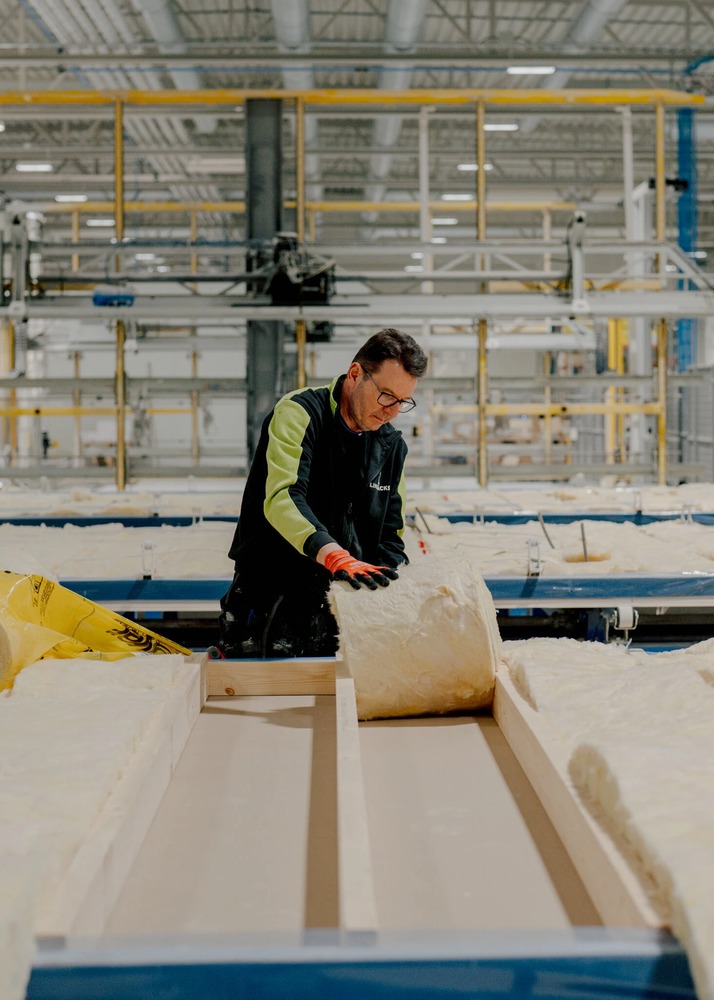

At the Lindbäcks factory in Sweden, one unit of volumetric housing is created every half an hour.
How to Build a House Like a Volvo
The premise of Operation Breakthrough was essentially: What if we could build houses in the same way the automotive industry produces cars? Lindbäcks, a family-owned construction company in Sweden, just shy of the Arctic Circle, took that question literally. Before opening a housing factory in 2017, its management visited the factories of Toyota and Volvo as well as nearby pulp and paper plants, borrowing their best ideas.
The Lindbäcks factory now spans 10 acres, an aircraft hangar for the most earthbound of structures. On a foggy June day, Stefan Lindbäck, the fourth-generation chief executive of the company, gave a tour to our delegation. We put on safety boots before being led onto a metal walkway overlooking the vast factory floor. Humans moved around machines, like people on the track of a music box.
Everything in the factory was oriented around one main line — a slow-moving conveyor belt on which finished components were assembled into fully formed modules. The main line was the spine. More time-consuming subassemblies — shorter lines with machines building floors, walls, ceilings and so-called logistics, like countertops and cabinets — fed into the spine like ribs. One boxy unit was completed every 30 minutes. The units could be connected to create apartments of different sizes and floor plans.
On one rib, an interior wall traveled onto a rack where it stood vertical for painting. This trick struck Mary Tingerthal, former commissioner of Minnesota Housing and now a special adviser to a modular company called RISE, as almost revolutionary. The little industrialized construction that happens in the United States tends to proceed down a single assembly line. Wet construction, like painting and staining, generally happens within a closed box and slows the progress. In this factory, she marveled, “It’s constantly out in the air!”
But the most remarkable difference between the United States and Sweden is regulatory. Building codes in the U.S. try to make buildings safe by prescribing exactly what materials must be used and how (a prescriptive code). In Sweden, the government does this by setting goals and letting builders come up with a way to achieve them (a performance code).
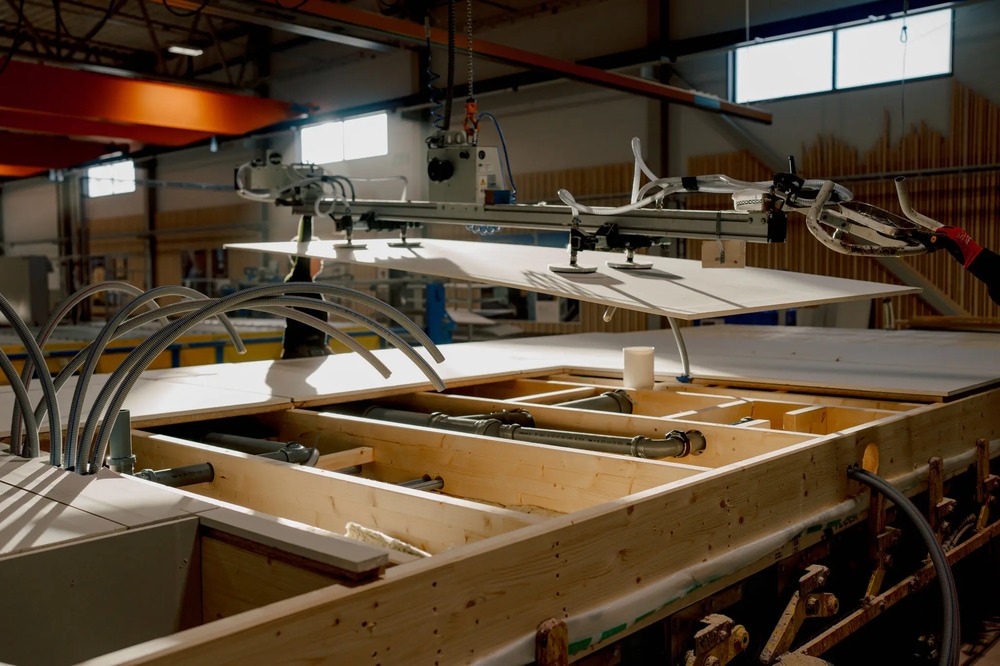
Board installed on a modular unit at Lindbäcks, a factory-built housing company. “It’s not about the cheapest product,” said Stefan Lindbäck, the chief executive. “We want the cheapest solution.”

A bathroom unit is installed onto the floor base of what will become a modular housing cube.
So, for instance, U.S. building codes dictate the thickness of drywall that must be used for fire resistance, how many layers are needed and how many nails are required to attach it. In Sweden, the code requires that a wall must resist burning for two hours, say, and lets engineers and manufacturers figure out how to accomplish that. The regulator’s job is to check the engineer’s work.
The result of both is fire resistance and structural safety, but in the United States, each residential building needs to be granted a permit. During construction, work often halts for inspectors to make periodic visual inspections. That contributes to a stop-and-go pace that frustrates pretty much everybody except lenders, who get interest on financing. Sweden’s codes require more work on the front end when builders have to demonstrate that their methods are up to snuff, but factory processes that comply with the performance code can be certified. This encourages innovative solutions and results in less waste.
Building quality homes, whether on-site or off-site, will never be cheap. You don’t want to scrimp on materials or labor, and the savings of factory-built homes might not be obvious at the start, Lindbäck told our group. A conventional builder might bid lower than Lindbäcks, but then there are the costs of supervising the construction on-site and paying for delays in interest charges. And conventional builders profit from changes late in the process.
With factory-built houses, modifications are minimized because customers generally select from a standardized framework and changes are allowed only up to a certain point. The factory builder’s advantage is quality control and speed. Real profit, long-term profit, comes from streamlining the building system for predictable outcomes and fast delivery.
“It’s not about the cheapest product,” Lindbäck said. “We want the cheapest solution.”
An Alchemy of Design and Wood
As we rode on a bus about an hour and a half south of the Lindbäcks factory, sun flickered for miles through thin bars of pine and spruce outside the windows. Then the boreal forest parted onto a small city where one building towered above the rest: Sara Kulturhus, a cultural center topped by a hotel, a 20-story mass timber building, constructed with factory-made units. The hotel tower contains 205 identical rooms sheathed in double-pane windows, like cubbies sealed in glass.
Before Sweden adopted its performance-based code in 1995, wood buildings had been limited to two stories; almost overnight, wooden buildings could be as tall as engineers could prove safe.
Construction accounts for 40 percent of global carbon emissions, but in Sweden it’s 20 percent because so much is built with the country’s plentiful wood. Carbon is captured in the trees harvested and in the trees planted to replace them. While wood costs more than some other materials, building with it requires less energy and allows for faster construction. That means developers can both pay off construction loans and rent units sooner.
A wooden key card clicked me into a spruce hotel room with a floor-to-ceiling window. The boxiness felt more a function of minimalist Scandinavian design than volumetric modular construction. It was well past midnight, but at the end of June, the sun merely dipped below the horizon for a few hours, casting a dim glow, like a lamp from a room around the corner. More even than the light at this magical, crepuscular hour, the critical element of the room’s alchemy of architecture and interior design was the soft, soothing wood.
Oskar Norelius, a partner at the firm White Arkitekter, which designed Sara Kulturhus and the hotel, told me that quality timber was expensive, so he economized by designing for industrial production. Hotels are perfect for this, as are dorms, offices and hospitals. “One module,” he said, referring to the hotel room itself, “is large enough that you can fit everything into it: the bathroom, all the finishes, and it will still be quite easy to transport.”
The volumetric modular units were assembled at Derome, a factory not dissimilar from Lindbäcks. They were then driven, 95 percent complete, to the site, where they were stacked by crane, as quickly as one 16-unit floor per week, depending on the wind. When units were bolted together, gaskets around their perimeters suctioned together, airtight. Hotel modules could be assembled off-site at the same time that the cultural center, the base of the hotel, was being built on-site. This parallel construction saved a year, according to the contractor.
Norelius walked us through the cultural center, which contains a public library, two art galleries and six theaters. As we passed through the monumental lobby into an open gallery space, Rupnik excitedly identified the standardized timber modules that had been designed for this project. The main entrance opened onto a staircase with seating for community readings and events. Above, a kinetic wooden chandelier opened and closed its wooden petals to reflect whether the building and its solar panels were adding or subtracting energy from the grid.
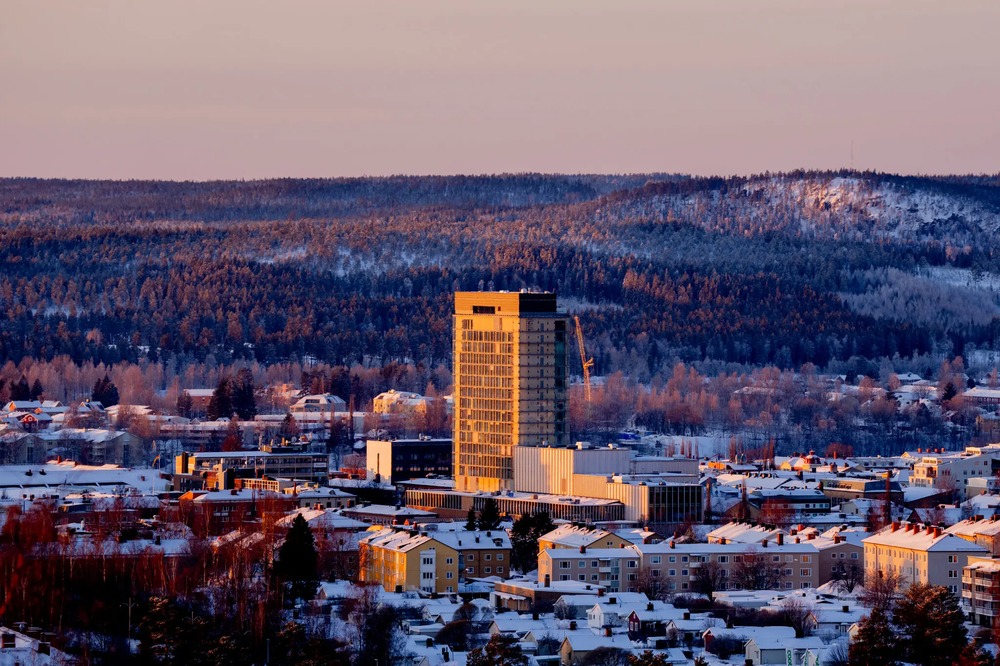
Sara Kulturhus, a cultural center topped with a 20-story hotel made of factory-built timber units, towers over the city of Skellefteå, Sweden.

A theater space inside Sara Kulturhus.
To Rupnik and others on the trip, the advantages of modular housing were obvious. But efforts to build this way in the U.S. have had difficulty flourishing.
The most famous U.S. off-site housing manufacturer is actually infamous: Katerra, founded in 2015, was the start-up that everyone believed would make the leap. It had oodles of money — SoftBank invested $2.4 billion — but it tried to do everything, everywhere, all at once. “They went on a very rapid growth acquisition,” said Todd Beyreuther, the former senior director of advanced building materials at Katerra, who had come on the Sweden trip. A year into the pandemic, having splurged on state-of-the-art factories and acquisitions, the company imploded and filed for bankruptcy.
But Rupnik is excited about other initiatives across the country. A company in Philadelphia bought Katerra’s factory in Tracy, Calif., and has completed more than 6,000 modules. In Vallejo, Calif., Factory OS has made housing for clients like Alphabet, Google’s parent company, and Oakland developers. In Minneapolis, the Public Housing Authority commissioned RISE Modular to build 16 buildings around the city.
What may ultimately force the adoption of industrialized housing in the United States is a skilled labor shortage. This has already affected one area of home-building: roof trusses, the structural timber frameworks that support a roof. Trusses require precisely cutting angles, a skill few workers possess, and so the structures are now mostly made in factories.
Worker shortages are bound to get worse. The median age of a construction worker is 42, according to the Bureau of Labor Statistics. Traditional construction means working unpredictable hours in unpredictable elements and requires physical strength to climb and hoist materials on a job site. In a factory, those constraints don’t necessarily apply. One data point: women make up less than 15 percent of U.S. construction workers; at Lindbäcks, more than 30 percent of the work force is female.
The controlled environment isn’t just good for workers; it’s also good for the product. Rupnik recalled watching a stack of timber sit on a job site in Boston all winter. It snowed, the snow melted into sooty slush, and the lumber soaked in a dirty puddle for weeks, compromising the construction quality.

In the factory: The kitchen space inside a unit of Lindbäcks housing.
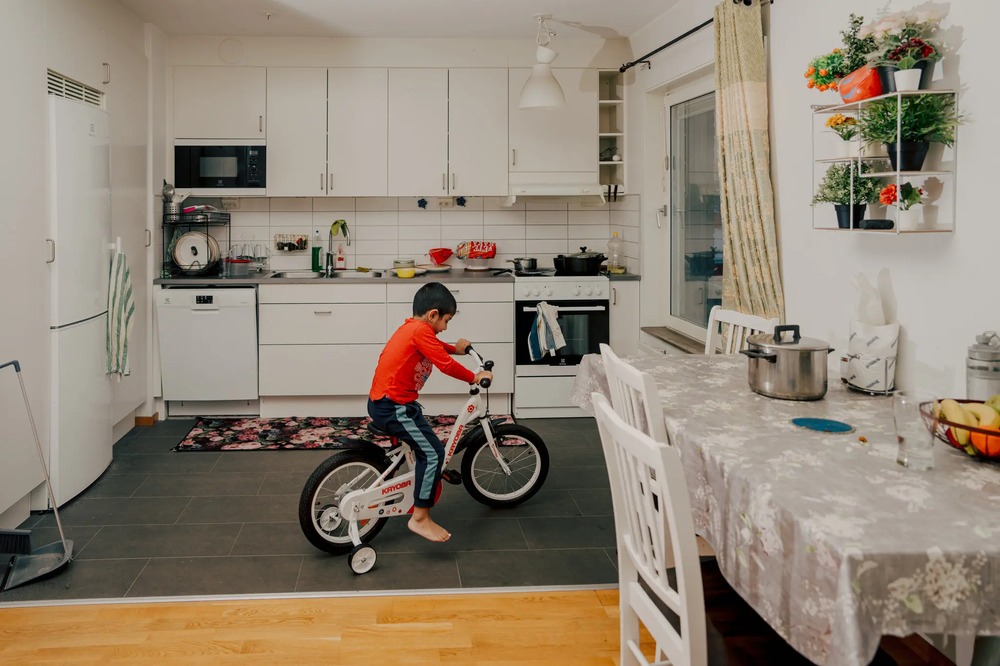
Out in the world: The kitchen of a Lindbäcks three-bedroom apartment, where Sumon Bhuyan and his family live in Piteå, Sweden.
The Need for Speed
No one seems to know exactly how many of the 3,000 units built by Operation Breakthrough still stand. Bryant Manor, the complex of 58 townhouses in downtown Seattle, is being torn down in stages without fanfare. In its place will be a building with 250 apartments, 58 of which will remain affordable.
On a recent Sunday, I dropped by. I approached one resident, Fatuma Hussein, as she was leaving the complex. Now a student at the University of Washington, she had grown up in Bryant Manor. “It’s gated and the kids can play outdoors — water balloon fights, soccer, everything you can think of,” she said. “The elders walk the green space in the morning. I know every family.”
She asked if I wanted a tour and led me inside. A toddler pressed her cheeks against a window with a doughy smile. As Hussein waved hello, two more smiling children appeared at the glass to greet us.
I followed Hussein into the townhouse where she lives with her mother and two sisters. We took off our shoes before entering. Hussein’s corner unit was one of the smaller ones, and yet it was adequate for a family.
Hussein’s mother, Asha Mohamed, a Somali refugee, stood in the galley kitchen, stirring a delicious Ethiopian lamb stew, a recipe she learned from neighbors at a community center event. She was cooking for a former neighbor who had lived in one of the units that had been razed. The former neighbor was lonely since relocating temporarily and her Bryant Manor friends were surprising her with a potluck.
The unit was old, and there was a water stain on the kitchen ceiling. The bedrooms were small. But there were two full bathrooms. I could not tell that the home was factory-built. What I could tell was that it was loved and well-cared-for by its occupants. And most important, Mohamed, who worked at a nearby day care, could afford the place on a housing voucher.
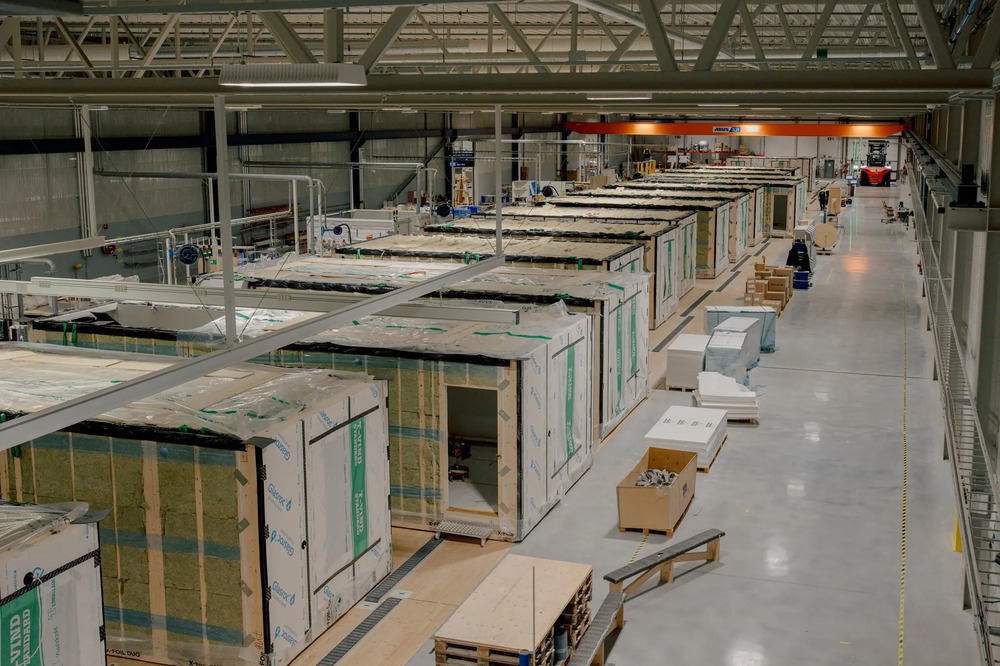
The productivity of factory construction could mean more permanent homes for more people, faster.
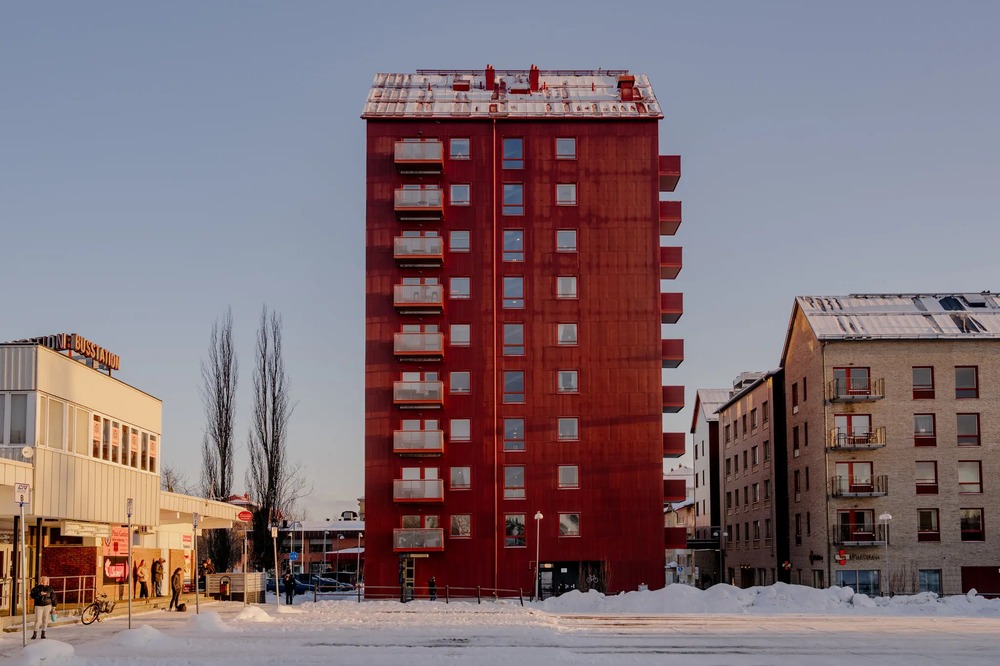
A modular apartment building in Piteå, Sweden.
Whenever I talked to Rupnik, he was more interested in the productivity part of the industrialized housing equation than the affordability part. This had confused me. But after spending time in Sweden talking to modular manufacturers, architects, government officials and leaders in the timber industry, I started to see the connection. Productivity means more permanent homes for more people, faster. Speed secures perhaps the greatest long-term savings — preventing the trauma of homelessness and offering security, community, continuous enrollment at the same school. It had been lulling to see the beautiful Swedish modular housing, but America is where I saw the real potential of even imperfectly designed modular housing.
Speed is how industrialization achieves affordability. Even when the labor and material cost savings are modest, the introduction of many more units in a relatively short period of time has the effect of lowering the market price of all units. That was Operation Breakthrough’s objective and MOD X’s main takeaway.
Rupnik is finishing his report for the Department of Housing and Urban Development and preparing for the next phase of MOD X’s HUD research, which involves dissecting the regulatory barriers to off-site construction in six pilot regions. He has been struck by how well the theories underpinning Operation Breakthrough have held up. It also frustrates him. Had attention been paid 50 years ago, housing in the United States might look very different today. Maybe architects would be designing more beautiful factory-built housing. Maybe prescriptive codes that stifle innovation would have been ameliorated. Maybe, Rupnik says, affordable housing would not be so hard to come by. House-building as it’s done now limits the range of what builders are willing to produce: Lower-priced housing isn’t as profitable and so, lower-income people suffer.
The only way to move forward, Rupnik believes, is to return to the ambition of Operation Breakthrough and unleash the power of industrialization. As he told me: “We really have run out of alternatives.”
https://www.nytimes.com/2024/06/08/headway/how-an-american-dream-of-housing-became-a-reality-in-sweden.html?
